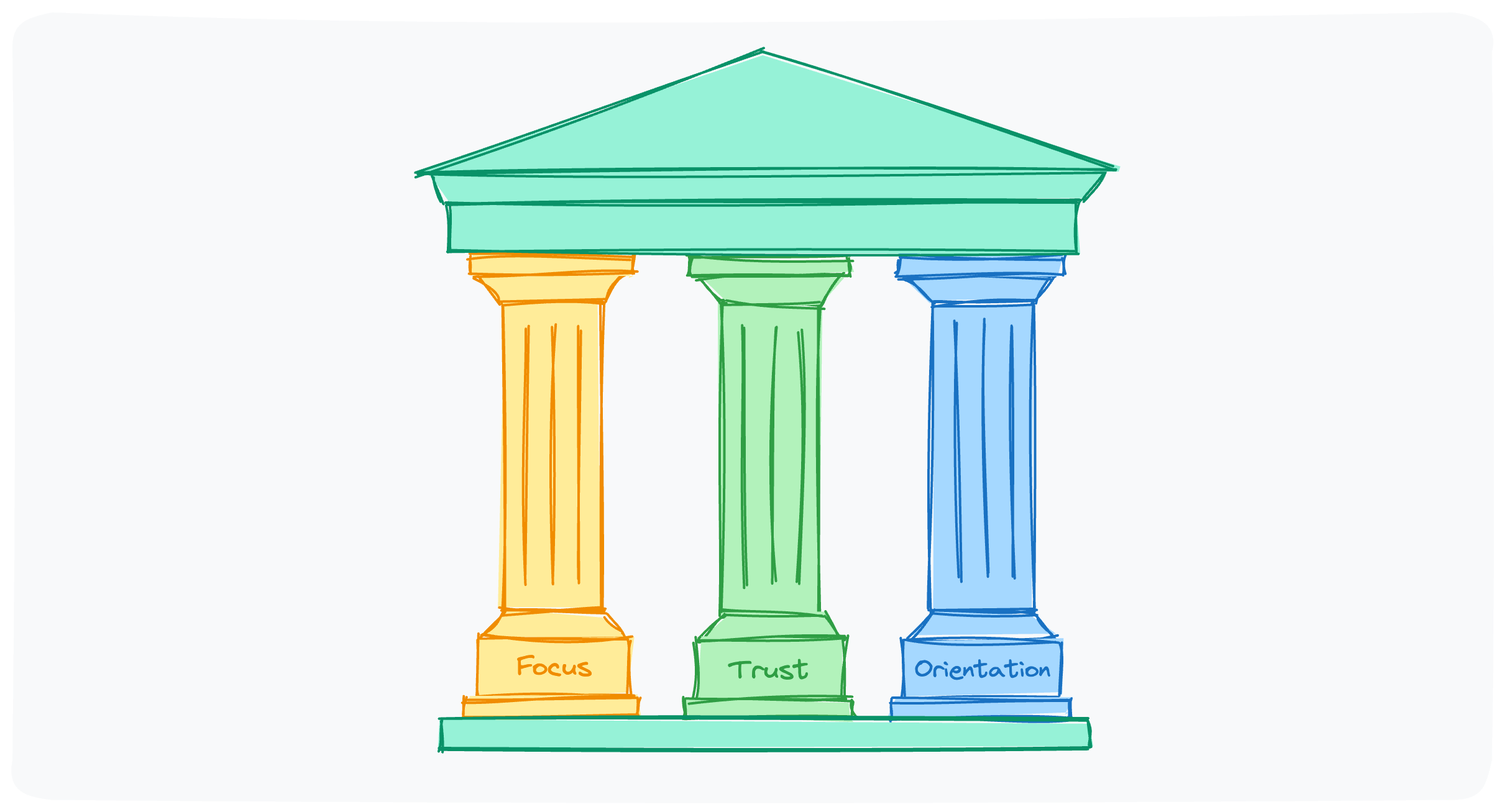Product Manager Leadership Principles: Focus, Trust, and Orientation
In the fast-paced world of product management, product managers aim to navigate their engineering teams through challenges and empower them to deliver outstanding product outcomes. To achieve this, strong leadership principles are essential. Product managers don’t lead by authority; instead, they set examples that inspire and guide their teams. To maximize your impact and ensure your team follows the mission, it’s crucial to create an optimized work environment that fosters collaboration and innovation.
Product managers don’t lead by authority; instead, they set examples that inspire and guide their teams.
Effective leadership in product management hinges on three core principles: Focus, Trust, and Orientation. These principles guide PMs in making strategic decisions, building strong relationships, and empowering their teams to deliver outstanding results. Let’s delve into these leadership principles and see how they can transform your approach to product management.

Focus: The Art of Ruthless Prioritization
Imagine you’re in a candy store with a limited budget, and you can only pick a few candies. The choice is tough, right? That’s exactly what product management feels like. You’re constantly facing a sea of opportunities, but resources—time, money, and manpower—are always limited. Here’s how to master the art of prioritization:

The Importance of Focus
Focus is your North Star in product management. It’s about channeling your resources towards the most promising opportunities and saying “no” to the rest. Every potential product change, whether it’s a new feature, a product enhancement, or even scaling back existing features, is a bet. Imagine your product backlog is a crowded highway. Without focus, you’ll end up in a traffic jam of ideas, none of which will see the light of day. Each decision you make has opportunity costs attached to it.
Opportunity Costs and Strategic Decisions
Every decision you make as a PM involves opportunity costs. When you choose to allocate resources to one feature, you’re inherently deciding not to invest those resources elsewhere. This trade-off means that prioritizing effectively is crucial. By understanding and evaluating opportunity costs, you ensure that your team focuses on the highest-value activities that align with your product’s strategic goals. This disciplined approach helps prevent resource dilution and maximizes the impact of your team’s efforts.
The Power of Discovery
Discovery is your best friend in mitigating the risks of these bets. Think of it as your detective work—digging deep to understand the problem space, validating assumptions, and gathering insights from users. By investing time in discovery, you minimize the chances of going down the wrong path and wasting precious resources.
Leading by Prioritization
As a leader, demonstrating focus means making tough decisions and showing your team how to prioritize effectively. Lead by example by being clear about what the top priorities are and why. Encourage your team to focus on high-impact tasks and show them how to evaluate the trade-offs involved in every decision.
Trust: The Glue That Holds Everything Together
In product management, trust is the invisible glue that binds your team, stakeholders, and vision together. Without it, everything falls apart. Here’s why trust is indispensable:

Building Trust with Stakeholders
As a product manager, you’re the central hub connecting various spokes—engineering, design, marketing, and sales. To be effective, you need to build trust across all these functions. Trust is earned by consistently delivering on your promises, being transparent, and communicating effectively.
Trust is earned by consistently delivering on your promises, being transparent, and communicating effectively.
Navigating Uncertainty with Confidence
The product development journey is fraught with uncertainties. Market conditions change, user needs evolve, and sometimes, things just don’t go as planned. In these moments, the trust you’ve built allows you to make decisions with confidence. Your leadership team needs to trust that you’re making informed choices, even when the path ahead isn’t crystal clear.
The Freedom to Fail
Trust also creates a safe environment for failure. In a trust-rich environment, team members feel psychologically safe to take risks, innovate, and fail fast without the fear of retribution. This culture of trust accelerates learning and, ultimately, time-to-market. Lead by example by admitting your own mistakes, being open to feedback, and showing that you trust your team to do their best work.
Orientation: Empowering Teams to Move Fast
With focus and trust in place, the next step is orientation—guiding your teams with clear direction and empowering them to act swiftly. Here’s how orientation plays a crucial role:

Clear Vision and Goals
Orientation starts with a clear vision. Where are you headed, and what does success look like? Define your product’s mission and set measurable goals. This clarity helps your team understand the big picture and align their efforts accordingly.
Empowerment Through Autonomy
When teams understand the vision and goals, they can operate with greater autonomy. Autonomy doesn’t mean working in isolation; it means making decisions within a framework of alignment. Empower your teams by giving them the freedom to experiment, innovate, and make decisions that drive the product forward.
Autonomy doesn’t mean working in isolation; it means making decisions within a framework of alignment.
Psychological Safety
Creating an environment of psychological safety is key to orientation. When team members feel safe to voice their ideas, ask questions, and challenge the status quo, you unlock their full potential. Encourage open communication, celebrate failures as learning opportunities, and foster a culture of continuous improvement.
Leading Through Orientation
Show your team how to stay oriented towards goals by setting clear expectations and regularly communicating progress. Be the role model in demonstrating how to align daily tasks with the broader mission. When your team sees you taking decisive action and making informed decisions, they will be inspired to do the same.
Wrapping It Up
In the chaotic yet exciting world of product management, mastering focus, trust, and orientation can significantly enhance your leadership effectiveness and accelerate your time-to-market. By prioritizing ruthlessly, building trust across your organization, and orienting your teams with clarity and empowerment, you create a thriving environment where great products can flourish.
Remember, product management is as much about managing relationships and expectations as it is about managing products. With the right balance of focus, trust, and orientation, you can lead your team to create products that truly make a difference. Now go out there, and may your product management journey be filled with focus, trust, and a whole lot of successful products!

